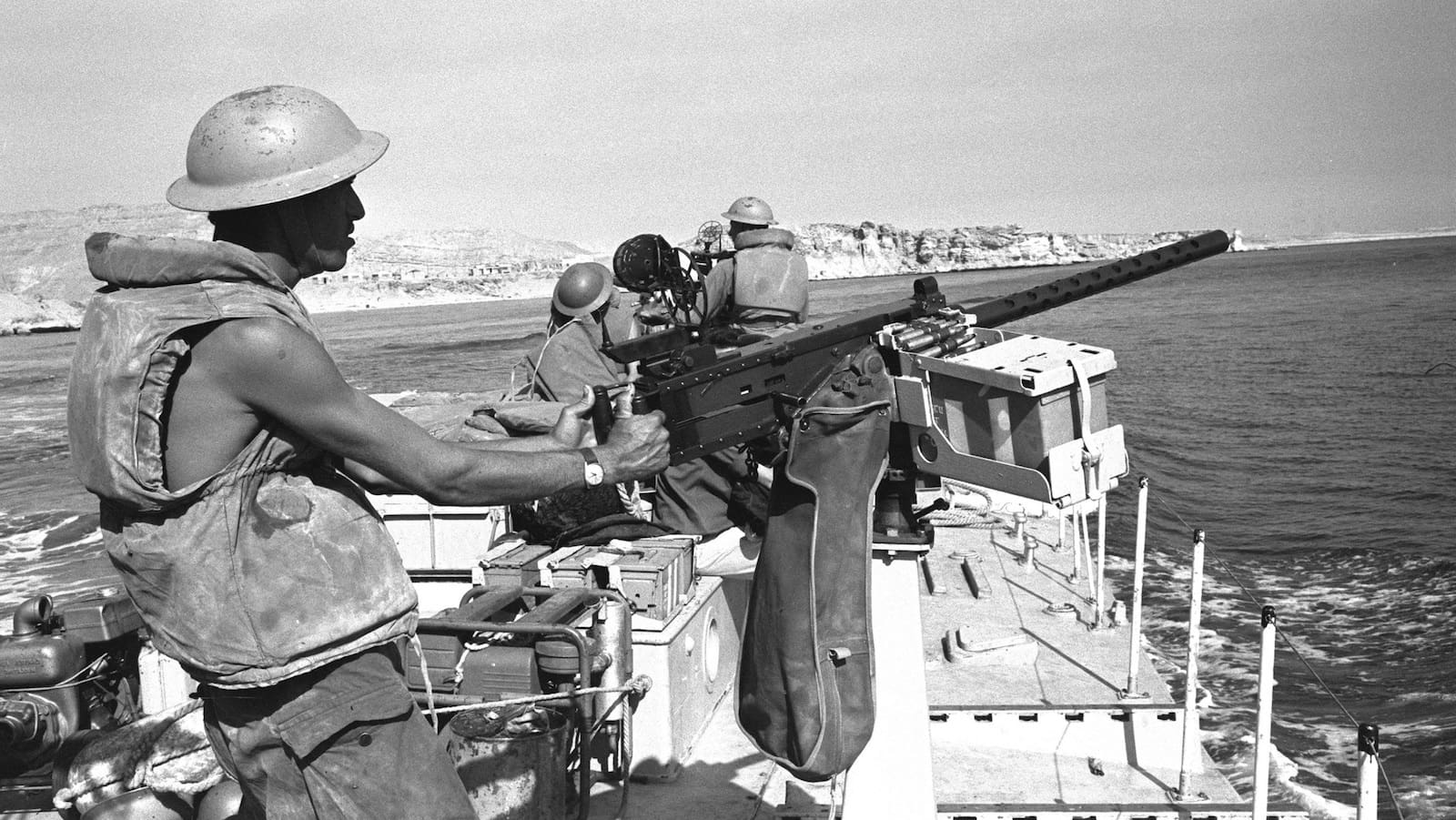
Curious about a pivotal moment in Middle Eastern history? The Six-Day War stands out as a significant conflict that reshaped the geopolitical landscape of the region. In just under a week, from June 5 to June 10, 1967, tensions between Israel and its neighboring Arab countries escalated into a full-blown war. This brief yet impactful clash resulted in dramatic territorial changes and had lasting effects on international relations. For anyone looking to understand the complexities of Middle Eastern politics or the strategic military maneuvers that can alter the course of history, these 30 facts about the Six-Day War offer a comprehensive overview. From the causes that led to the outbreak of hostilities to the aftermath and its influence on future conflicts, this guide provides a concise yet thorough exploration of this crucial event.
The Six-Day War, a pivotal event in Middle Eastern history, unfolded in June 1967. This conflict reshaped the geopolitical landscape, affecting millions and leaving a legacy that still influences relations in the region today. Let's delve into some fascinating facts about this historic confrontation.
Origins of the Six-Day War
Tensions had been simmering for years before the war broke out. These were primarily due to political, territorial, and religious disputes involving Israel and its neighboring Arab countries.
-
The immediate cause of the Six-Day War was Egypt's blockade of the Straits of Tiran to Israeli shipping in May 1967. This move was seen by Israel as a casus belli, a direct cause for war.
-
Diplomatic efforts failed to resolve the escalating tensions. Despite attempts by international actors to mediate, the situation quickly spiraled into armed conflict.
The Combatants
The war saw a coalition of Arab states pitted against Israel, each side backed by major global powers of the Cold War era.
-
Israel faced off against Egypt, Jordan, and Syria. These were the primary combatants, with other Arab nations providing support to the Arab coalition.
-
Global powers took sides, with the Soviet Union backing the Arab states and the United States supporting Israel. This added an element of Cold War rivalry to the conflict.
Key Battles and Strategies
The war was marked by swift moves and strategic surprises, with Israel taking the initiative in the early hours.
-
Preemptive strike: Israel launched a surprise attack on Egypt's air force on the morning of June 5, 1967, effectively grounding the majority of the Egyptian Air Force.
-
Rapid territorial gains: Following the initial air strikes, Israel quickly moved to capture key territories, including the Gaza Strip, the Sinai Peninsula, the West Bank, and the Golan Heights.
The Aftermath and Impact
The war's end brought significant changes to the Middle East, affecting the lives of millions and altering the political landscape.
-
New borders were drawn: Israel's victory resulted in the significant expansion of its territory, more than tripling its size.
-
The refugee crisis worsened: The conflict resulted in a large number of displaced persons, particularly Palestinians, exacerbating an already dire humanitarian situation.
-
International relations were strained: The outcome of the war led to increased tensions between Israel and its neighbors, setting the stage for future conflicts.
Legacy of the Six-Day War
The Six-Day War left a lasting impact on the region and the world, influencing international policy and the quest for peace in the Middle East.
-
UN Resolution 242: Adopted in November 1967, this resolution called for the withdrawal of Israeli armed forces from territories occupied during the war and the acknowledgment of every state in the area's right to live in peace.
-
Shift in power dynamics: Israel's decisive victory altered the balance of power in the Middle East, establishing it as a dominant military force in the region.
-
Ongoing conflict: The war laid the groundwork for continued strife and conflict, including the Yom Kippur War of 1973, and remains a central issue in Arab-Israeli relations.
-
Cultural impact: The Six-Day War has been depicted in various forms of media, including films, books, and songs, reflecting its significant role in shaping modern Middle Eastern history.
-
Technological advancements: The conflict spurred innovations in military strategy and technology, influencing global military tactics.
-
Peace efforts: Despite the ongoing conflict, the Six-Day War also initiated a series of peace negotiations, including the Camp David Accords and the Israel-Egypt Peace Treaty, highlighting the complex path towards peace in the region.
-
Historical debates: The causes, conduct, and consequences of the Six-Day War continue to be subjects of extensive analysis and debate among historians, underscoring the complexity of the conflict.
-
Memorialization: Across Israel and the Arab world, the war is commemorated in various ways, reflecting differing perspectives on its legacy and outcomes.
-
Impact on international law: The war and its aftermath have had significant implications for international law, particularly regarding the legality of occupation and the rights of displaced persons.
-
Influence on global politics: The Six-Day War demonstrated the influence of regional conflicts on global politics, highlighting the interconnectedness of international relations.
-
Educational significance: The conflict is studied in schools around the world as a key event in 20th-century history, offering lessons on war, peace, and the complexities of international diplomacy.
-
Environmental consequences: The war also had environmental impacts, including damage to natural habitats and the displacement of wildlife, illustrating the broader ecological effects of conflict.
-
Psychological effects: The Six-Day War had profound psychological effects on those who lived through it, shaping identities and perceptions across generations.
-
Economic repercussions: The conflict led to significant economic challenges for the involved countries, affecting trade, infrastructure, and development.
-
Technological proliferation: The war accelerated the spread of military technologies, including advancements in aircraft, tanks, and weaponry, influencing global arms races.
-
Cultural exchanges: Despite the conflict, the subsequent years have seen various forms of cultural exchange and dialogue between Israelis and Arabs, fostering moments of mutual understanding amidst ongoing tensions.
-
Human rights discussions: The Six-Day War has prompted ongoing discussions about human rights, particularly concerning the treatment of prisoners of war and civilian populations.
-
Media coverage: The conflict was one of the first major wars to be extensively covered by international media, shaping public perceptions and the role of journalism in conflict zones.
-
Diplomatic relations: The war had a lasting impact on diplomatic relations between Middle Eastern countries and the rest of the world, influencing alliances and foreign policies.
-
Security concerns: The legacy of the Six-Day War continues to influence security strategies and defense planning in the region, highlighting the enduring importance of military preparedness.
-
Peace movements: In the aftermath of the war, peace movements in Israel and the Arab world gained momentum, advocating for a resolution to the ongoing conflict and promoting dialogue and reconciliation.
Reflecting on the Six-Day War's Legacy
Diving into the heart of the Six-Day War, we've journeyed through a pivotal moment in history that reshaped the Middle East. This conflict, brief yet profoundly impactful, not only altered the geopolitical landscape but also left an indelible mark on the lives of millions. From strategic triumphs to the human stories woven through the fabric of battle, each fact shared offers a window into the complexities and consequences of this historic clash. Understanding these events helps us grasp the enduring tensions and the quest for peace in a region rich with history yet fraught with challenges. As we look back, let's carry forward the lessons learned, acknowledging the past's shadows while striving for a future where dialogue and understanding pave the way for lasting harmony.
Was this page helpful?
Our commitment to delivering trustworthy and engaging content is at the heart of what we do. Each fact on our site is contributed by real users like you, bringing a wealth of diverse insights and information. To ensure the highest standards of accuracy and reliability, our dedicated editors meticulously review each submission. This process guarantees that the facts we share are not only fascinating but also credible. Trust in our commitment to quality and authenticity as you explore and learn with us.


